
First Look: The FAcT Fleets in RCAF Colours
May 29, 2025
This week at CANSEC, KF President & CEO Tracy Medve (pictured below) and RCAF Lieutenant General Eric Kenny unveiled the RCAF liveries and designations for the new FAcT fleets. Check out the full story below:
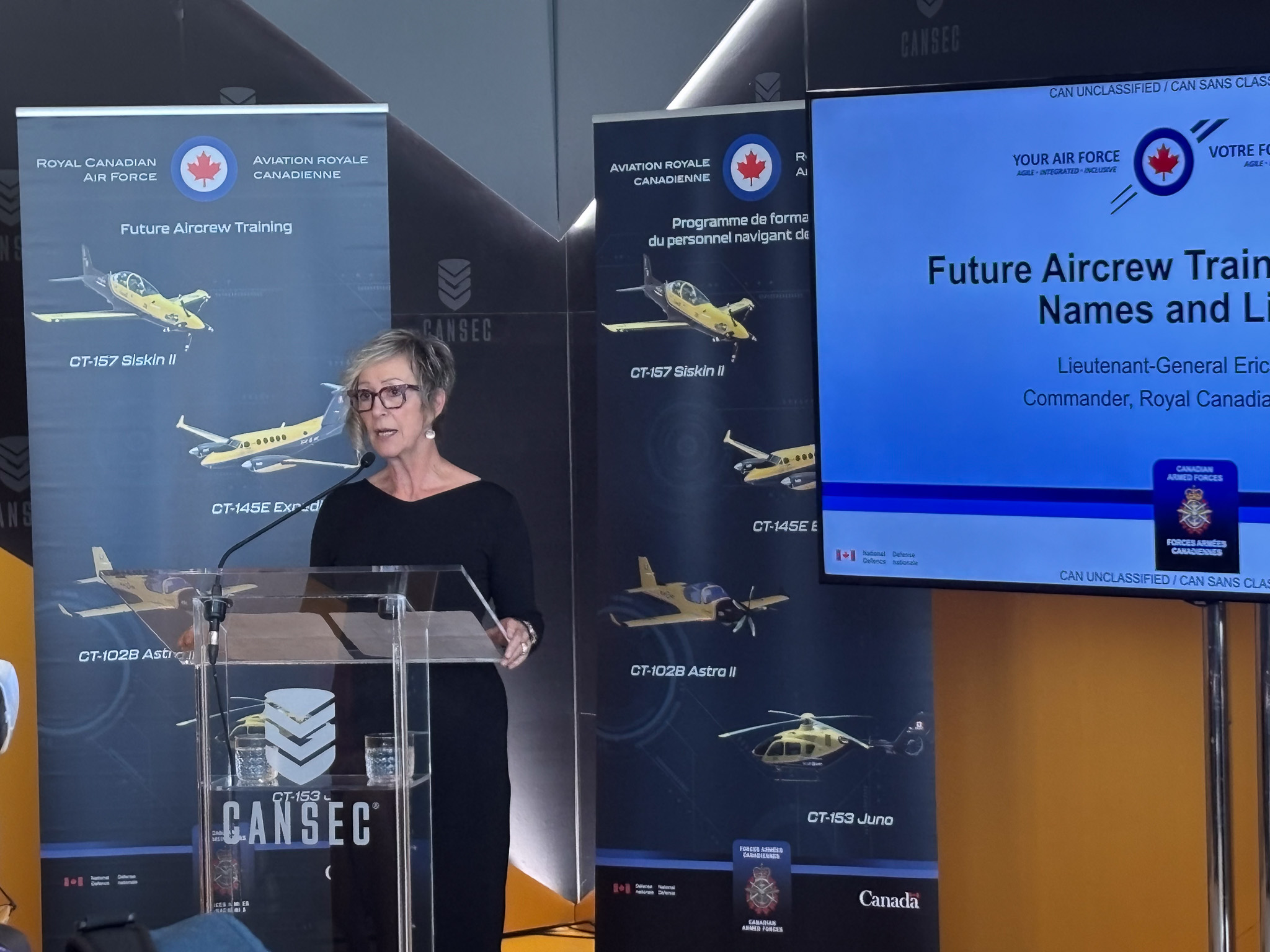
Courtesy of SkyAlyne:
On May 28, 2025, the Royal Canadian Air Force (RCAF) Commander, Lieutenant General Eric Kenny, unveiled the RCAF liveries (paint schemes) and designations for the fleets of aircraft that will be serving with the RCAF in the Future Aircrew Training (FAcT) program.
The names and liveries for the new FAcT fleets pay tribute to the 101-year history of the RCAF, while reflecting a forward-looking vision for Canada’s modern Air Force. The approach to naming and painting FAcT aircraft was thematic. Given that 2024 marked both the RCAF Centennial and the kickoff of the FAcT program, Canada’s Air Force is taking the opportunity to commemorate 100+ years of RCAF flight operations and training history, while we also stepping into the next generation of military aircrew training in Canada.
About the ‘Reflect Forward’ livery
Each aircraft will bear a colour scheme that is primarily two colours: yellow, to reflect the historical ‘training yellow’ of the Commonwealth Air Training Plan aircraft that dominated Canadian skies from 1940 to 1945, and dark blue to reflect the modern colours of today’s trainers and Air Force.
There is also a white and red line, symbolizing Canada’s national flag, binds the colours together— this stripe being reminiscent of the RCAF’s ‘Lightning Bolt’ worn by various aircraft since 1948.
Together, these colours pay tribute to our successful historic training initiatives and Canada’s continuation of excellence in aircrew training as the RCAF looks to the next one hundred years. This combination of honouring our history, while advancing into the future is what drove the name of the livery: Reflect Forward.
It’s also very important that each time a RCAF student aircrew step into one of these aircraft, they understand the significance of what it means: they are joining an institution with a very proud history and a bright future.
There is also a very practical reason for this two-tone livery: the dark blue, when used in conjunction with the high visibility yellow provides contrast against a variety of terrains and weather conditions, making it easier for pilots to see other aircraft in the sky and against the ground, especially when flying over summer prairie terrain and in winter conditions when snow is on the ground. In other words, this is an important blend of form and function, where visibility is chiefly important for training aircraft.
Meet the Fleets
CT-102B Astra II
Grob G 120TP
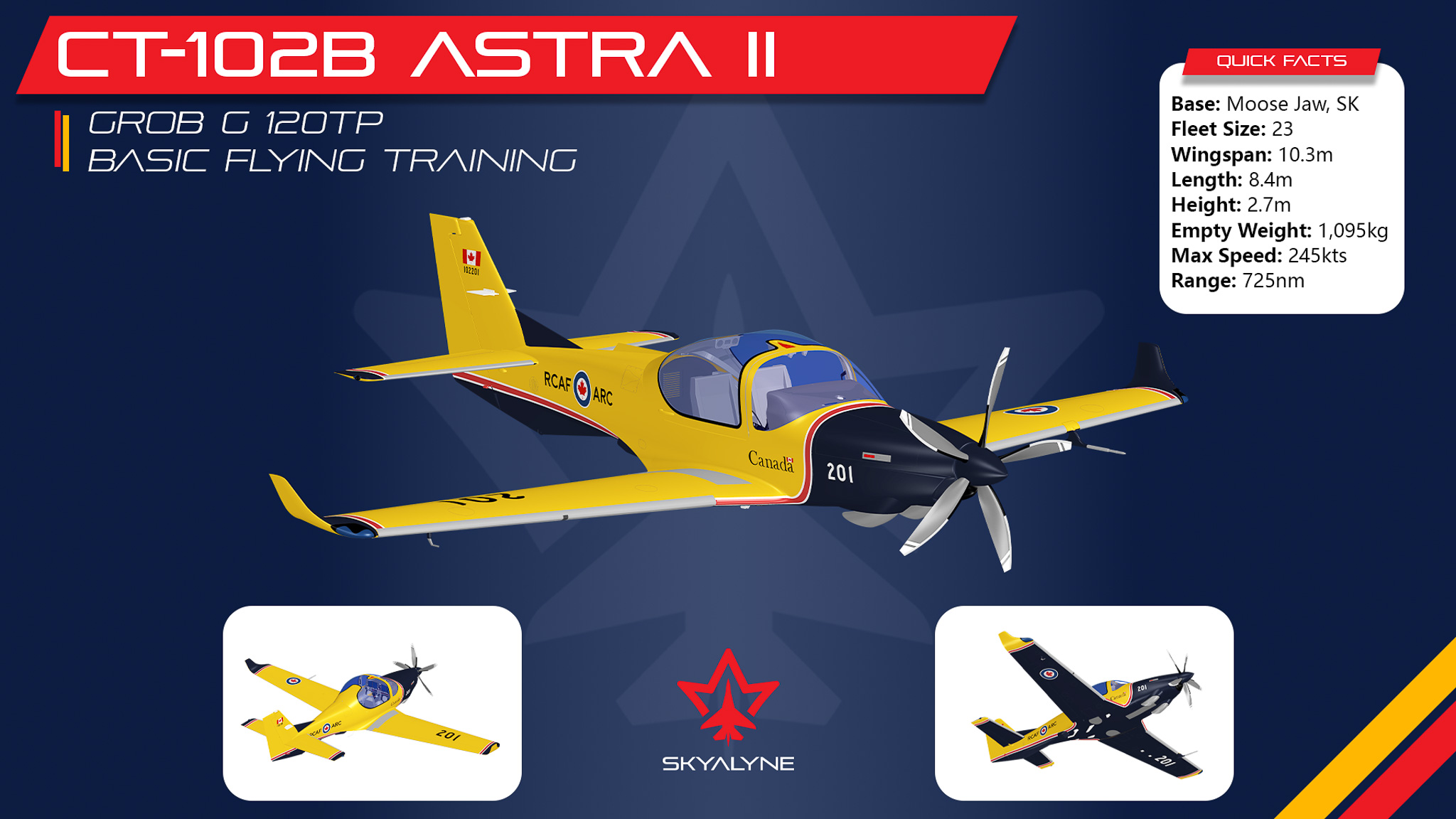
This aircraft is following in the footsteps of the CT-102A Astra, Grob G 120A, the predecessor of the CT-102B Astra II, Grob G 120TP. Astra is Latin for ‘Star’ and speaks to the RCAF’s motto ‘Through Adversity to the Stars”, while also acknowledging the growing military importance of the space domain.
CT-157 Siskin II
Pilatus PC-21
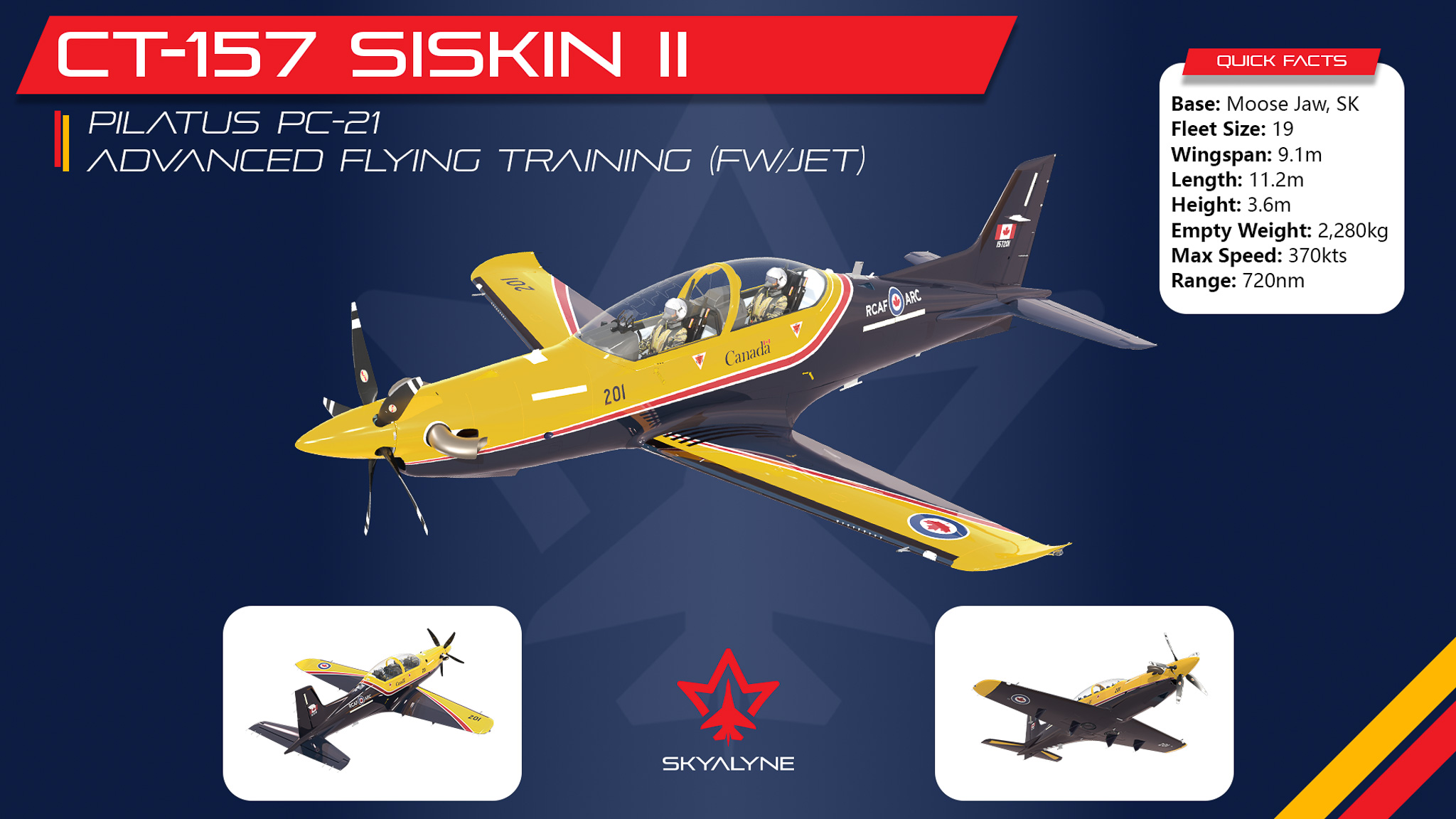
Named after the Armstrong Whitworth Siskin. Acquired between 1926 and 1929, the original Siskin was the RCAF’s first true fighter aircraft, the most state-of-the-art of its time and renowned for its aerobatic qualities.
CT-153 Juno
Airbus H135
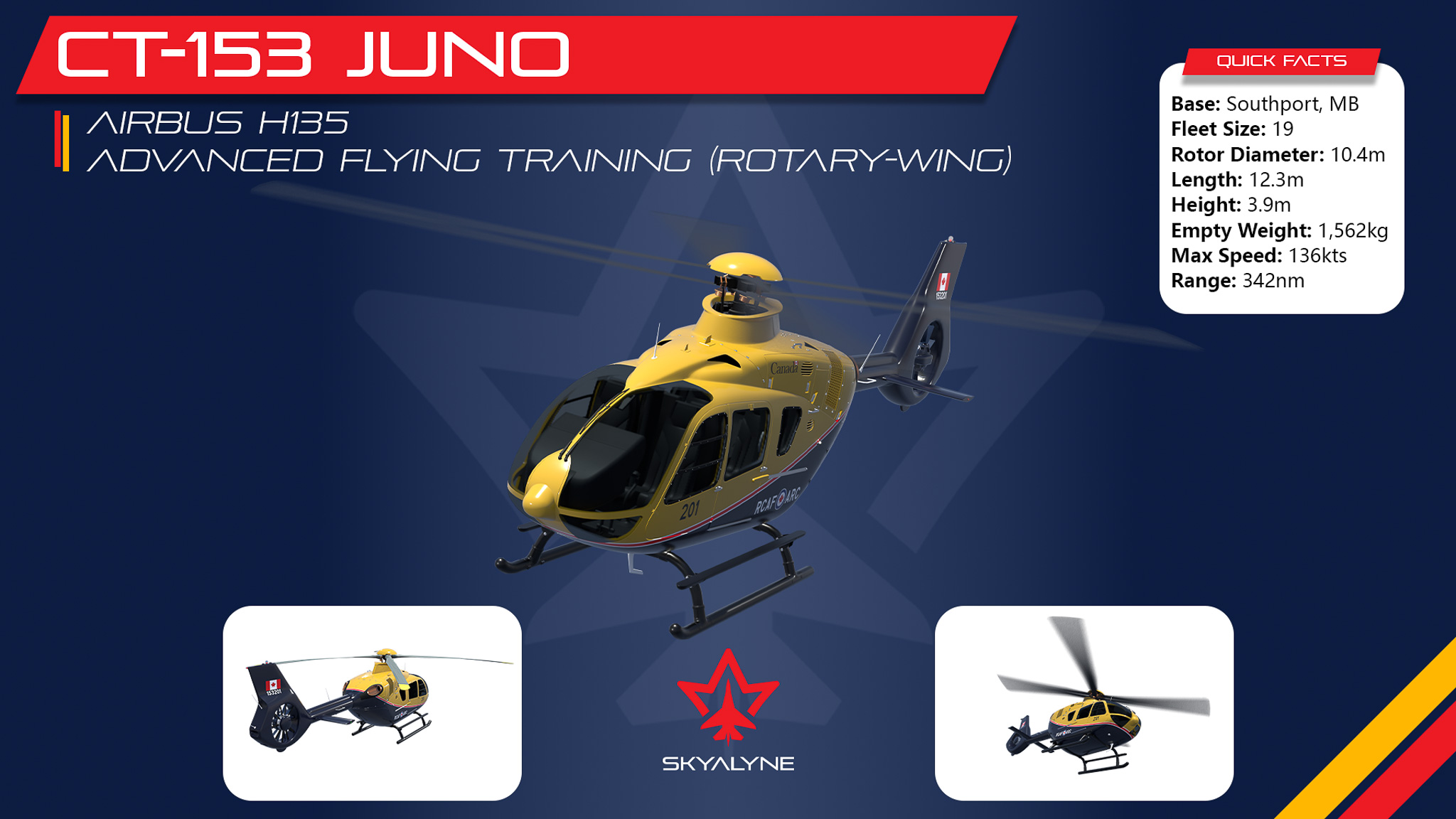
Juno is a testament to Canada’s, and the Allied, legacy at Juno Beach, where thousands of Canadian military members landed on June 6, 1944 ‘D-Day’ as part of Operation Overlord. Juno is also a reflection of Canada’s ongoing alignment with our allies, as H135s already serve in the Royal Air Force, as well as the Australian service, and those fleets are similarly named Juno.
CT-145E Expeditor II
Beechcraft King Air 260

The name is a tribute to a comparably sized aircraft, the C45/CT-128 Expeditor. The original Expeditor aircraft were used for training Second World War navigators and bombardiers, as well as serving several other roles from photo survey to light cargo and passenger transportation duties.
CT-142Q Citadel
De Havilland Canada Dash 8-400
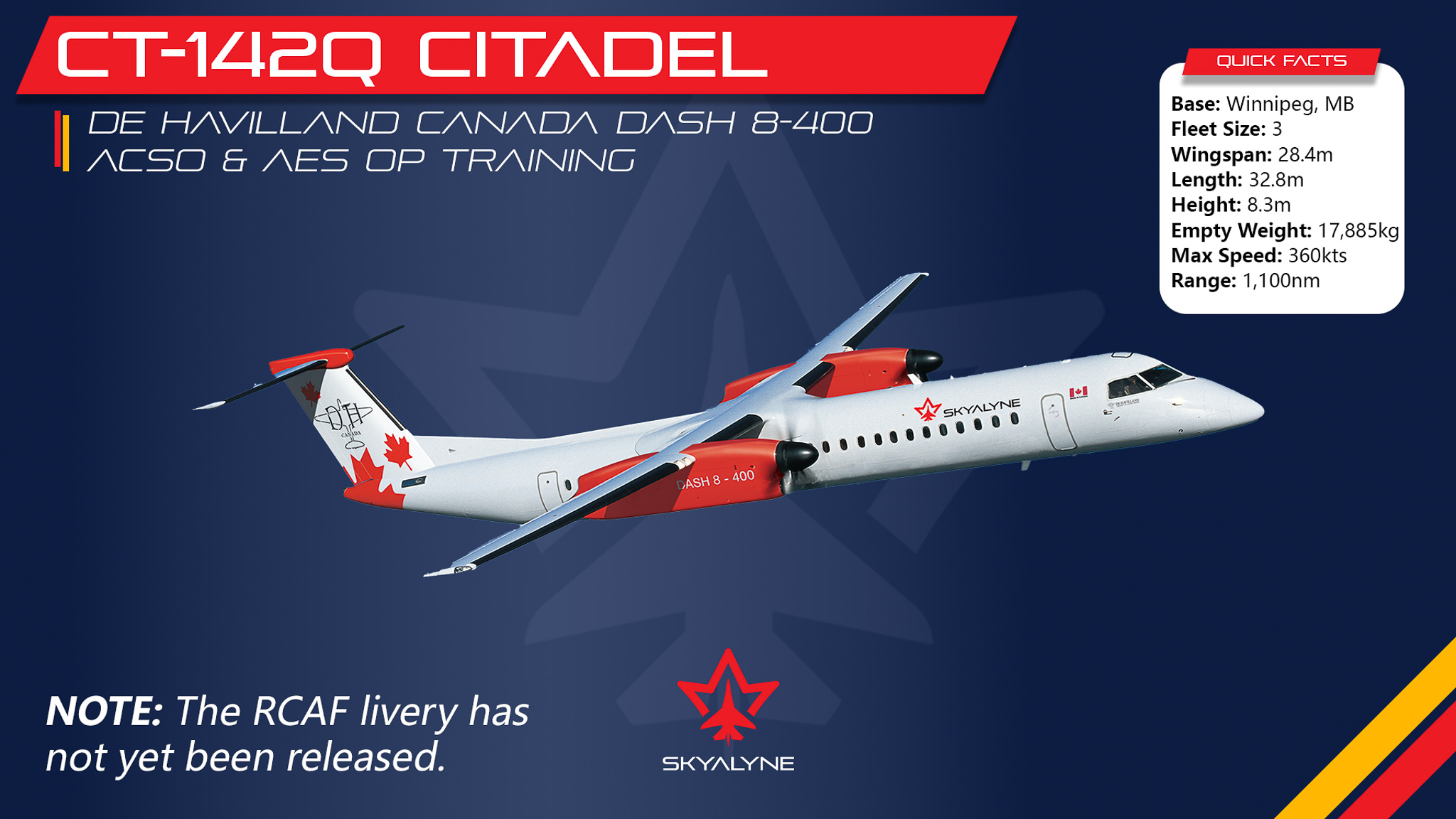
Note: the livery for this aircraft is yet to be unveiled – stay tuned!
The CT-142Q Citadel takes its name from two prominent military citadels in Canada – La Citadelle de Quebec and the Halifax Citadel, both of which have played significant roles in Canada’s military history. As an aircraft that trains Air Combat Systems Officers and Airborne Electronic Sensor Operators to protect Canadian sovereignty by operating systems for long range patrol aircraft, like the soon-to-arrive CP-8A Poseidon, and Cyclone helicopters, the name ‘Citadel’ harkens to the similar protective qualities of these two impressive defensive structures.
To learn more about the Future Aircrew Training Program, visit skyalyne.ca.
Want to help us shape the future of RCAF pilot training? We’re currently hiring Aircraft Fleet Engineers! Learn more and apply now.

